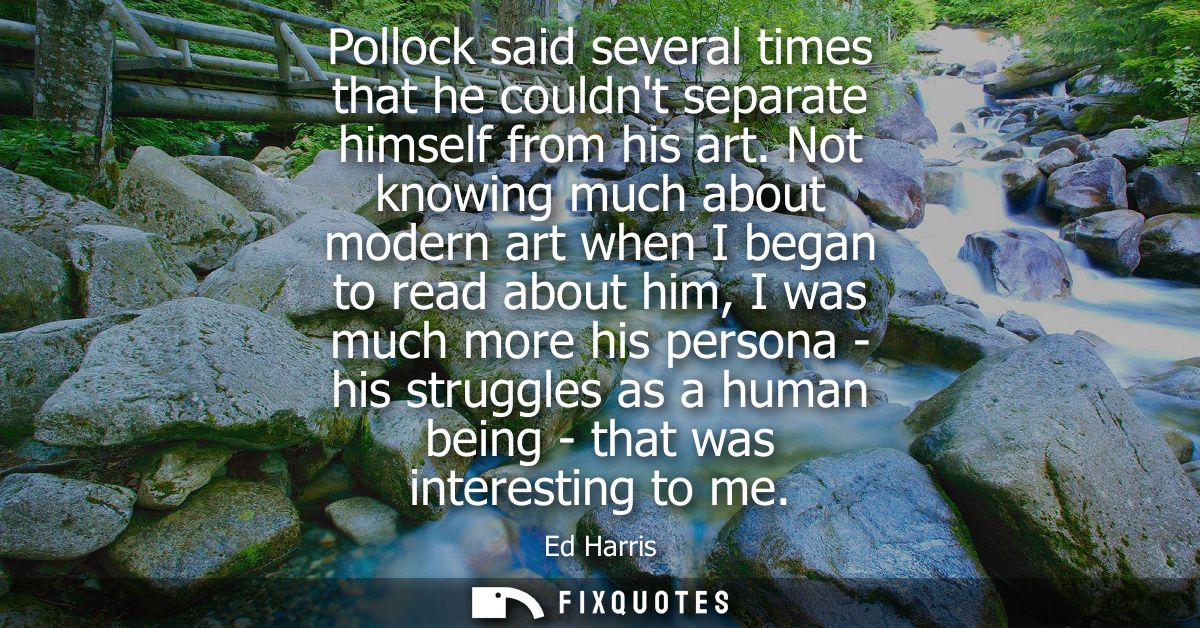"Pollock said several times that he couldn't separate himself from his art. Not knowing much about modern art when I began to read about him, I was much more his persona - his struggles as a human being - that was interesting to me"
About this Quote
Ed Harris’s reflection touches on the profound connection between an artist and their work, particularly in the case of Jackson Pollock. Pollock’s assertion that he couldn’t separate himself from his art suggests a total immersion in his creative process, where the boundaries between his inner life and his productions become blurred. For Pollock, painting was not just an act of skilled technique; it was a form of self-expression so raw and immediate that his feelings, anxieties, and life experience poured into each canvas. This level of intensity implies that to understand his paintings, it is necessary to grapple with the complexities of his personality and struggles , his triumphs and torments shaped every gesture and splash of paint.
Ed Harris admits to approaching Pollock with a limited understanding of modern art, yet he found himself captivated by the artist’s humanity rather than strictly his artistry. There’s an authenticity to Pollock’s journey that resonates on a universal level. His well-documented battles with addiction, inner turmoil, and the search for meaning echo struggles familiar to many. Harris is drawn less to the potential intellectual puzzles of abstract expressionism and more to Pollock’s personal vulnerability , the way pain and passion are inseparable from the creative act. This connection between man and art reveals that the abstract is often deeply personal; behind each seemingly random stroke lies intent, emotion, and story.
The fascination with Pollock’s persona suggests that art is as much about its creator as its form. Understanding the tormented, searching soul behind the artwork can add layers of meaning to what’s on the canvas. For Harris, and for many others, this human element is what draws people into the world of an artist whose life and work exist in a state of continual dialogue. The art becomes a window into the psyche, making Pollock not just a painter of canvases but a painter of his own existence.
More details
About the Author

